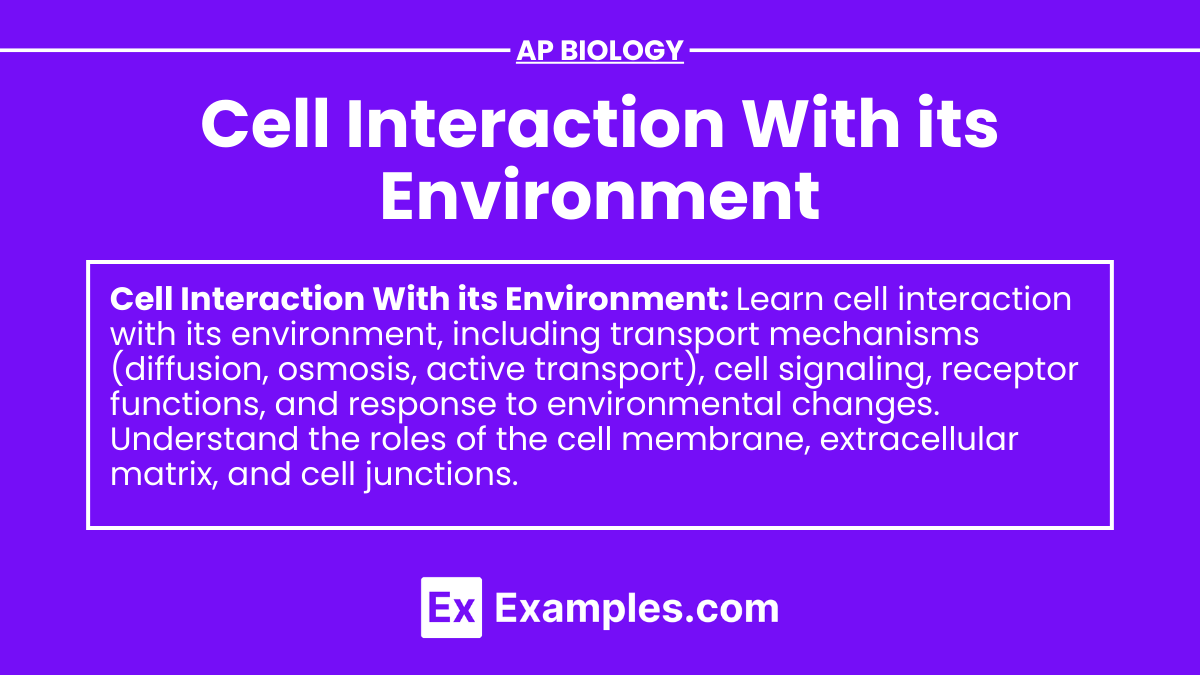In AP Biology, understanding cell interaction with its environment is crucial, as cells rely on water for transport and chemical reactions. The chemical properties of the cell membrane regulate the exchange of substances, while interactions with water vapor impact processes like osmosis and diffusion. These interactions are fundamental for maintaining homeostasis and responding to external signals.
Learning Objectives
Students will understand the mechanisms of cell interaction with its environment, focusing on water balance, transport processes, and cell signaling. They will explore the chemical properties of the cell membrane that regulate substance exchange and learn how cells respond to changes in water vapor and other environmental factors. Mastery of these concepts is essential for comprehending cellular homeostasis and adaptation in AP Biology.
Cell Membrane: The Interface
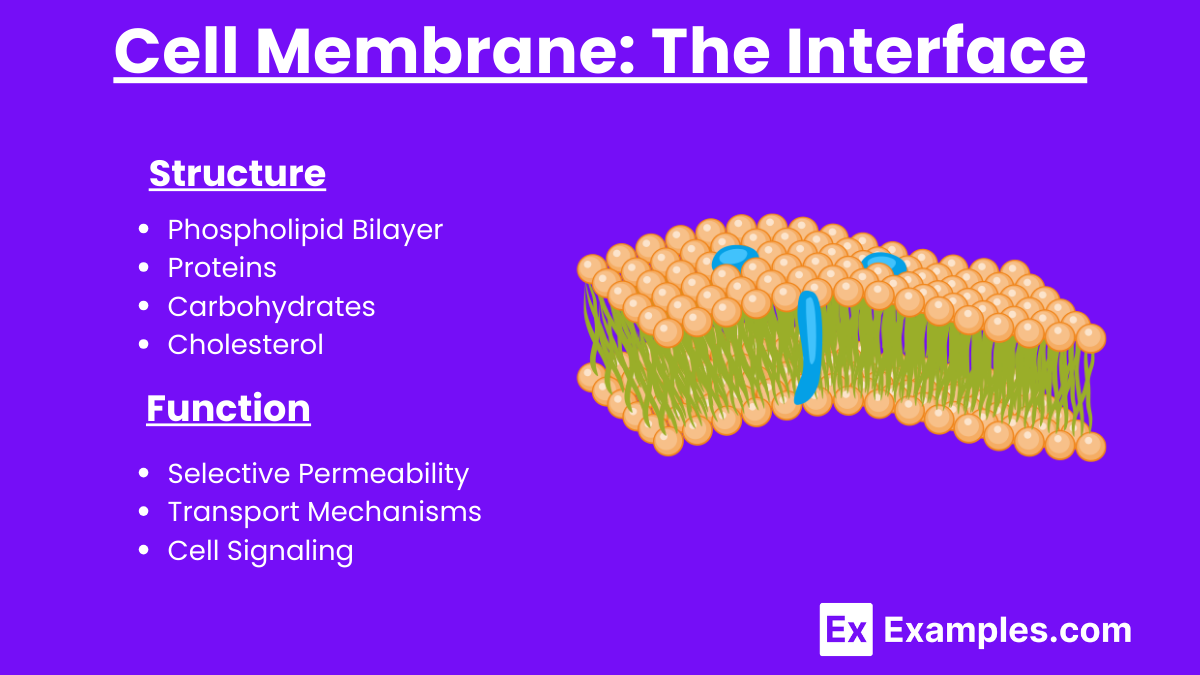
Structure
Phospholipid Bilayer: Composed of hydrophilic heads and hydrophobic tails.
Proteins: Integral and peripheral proteins assist in transport and communication.
Carbohydrates: Glycolipids and glycoproteins play roles in cell recognition and signaling.
Cholesterol: Maintains membrane fluidity.
Function
Selective Permeability: Regulates the entry and exit of substances.
Transport Mechanisms: Facilitates passive and active transport.
Cell Signaling: Receptors on the membrane bind to signaling molecules, triggering internal responses.
Transport Mechanisms
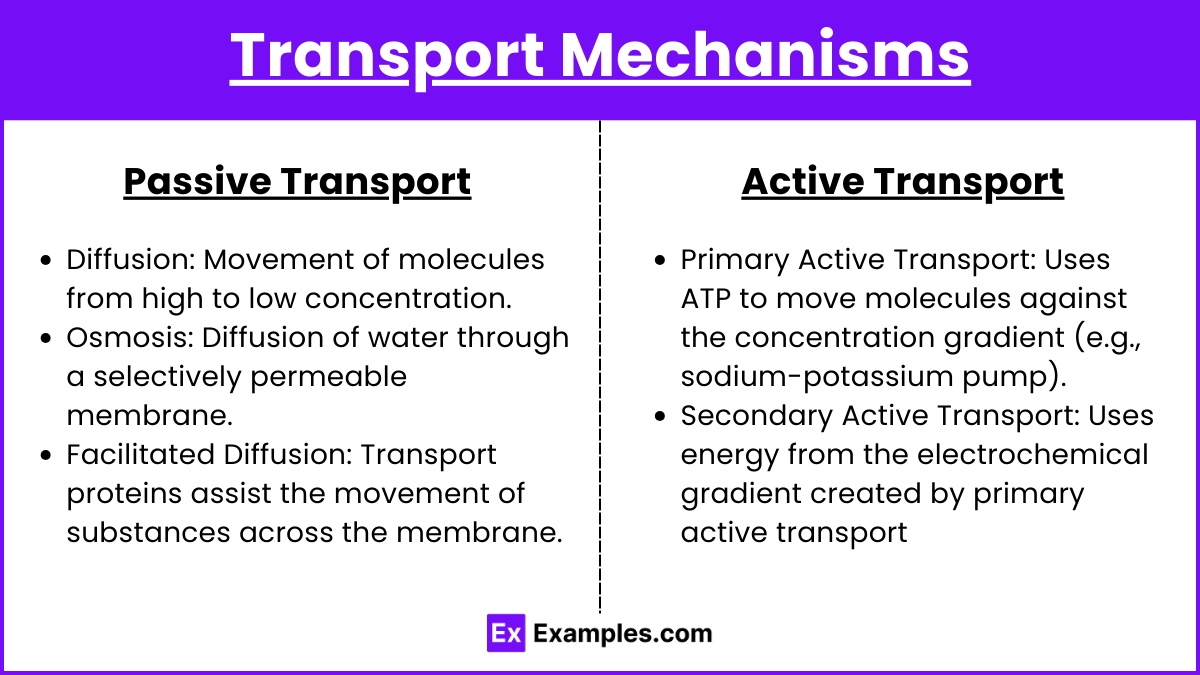
Passive Transport
Diffusion: Movement of molecules from high to low concentration.
Osmosis: Diffusion of water through a selectively permeable membrane.
Facilitated Diffusion: Transport proteins assist the movement of substances across the membrane.
Active Transport
Primary Active Transport: Uses ATP to move molecules against the concentration gradient (e.g., sodium-potassium pump).
Secondary Active Transport: Uses energy from the electrochemical gradient created by primary active transport.
Endocytosis and Exocytosis
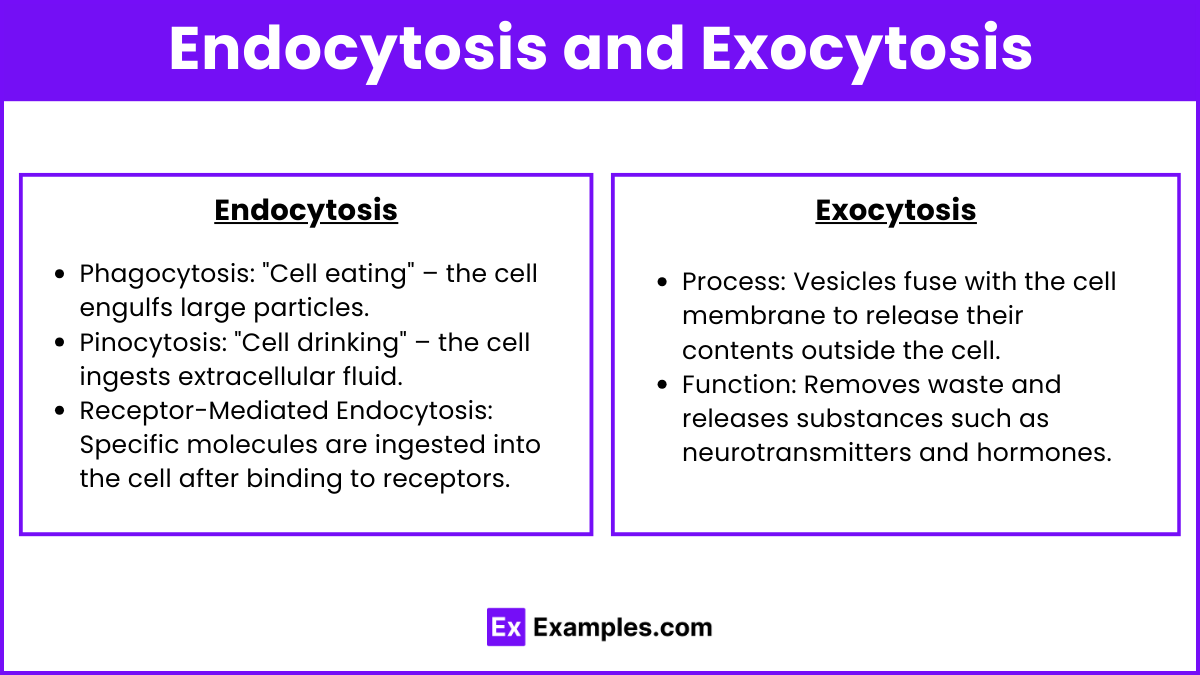
Endocytosis
Phagocytosis: "Cell eating" – the cell engulfs large particles.
Pinocytosis: "Cell drinking" – the cell ingests extracellular fluid.
Receptor-Mediated Endocytosis: Specific molecules are ingested into the cell after binding to receptors.
Exocytosis
Process: Vesicles fuse with the cell membrane to release their contents outside the cell.
Function: Removes waste and releases substances such as neurotransmitters and hormones.
Cell Communication
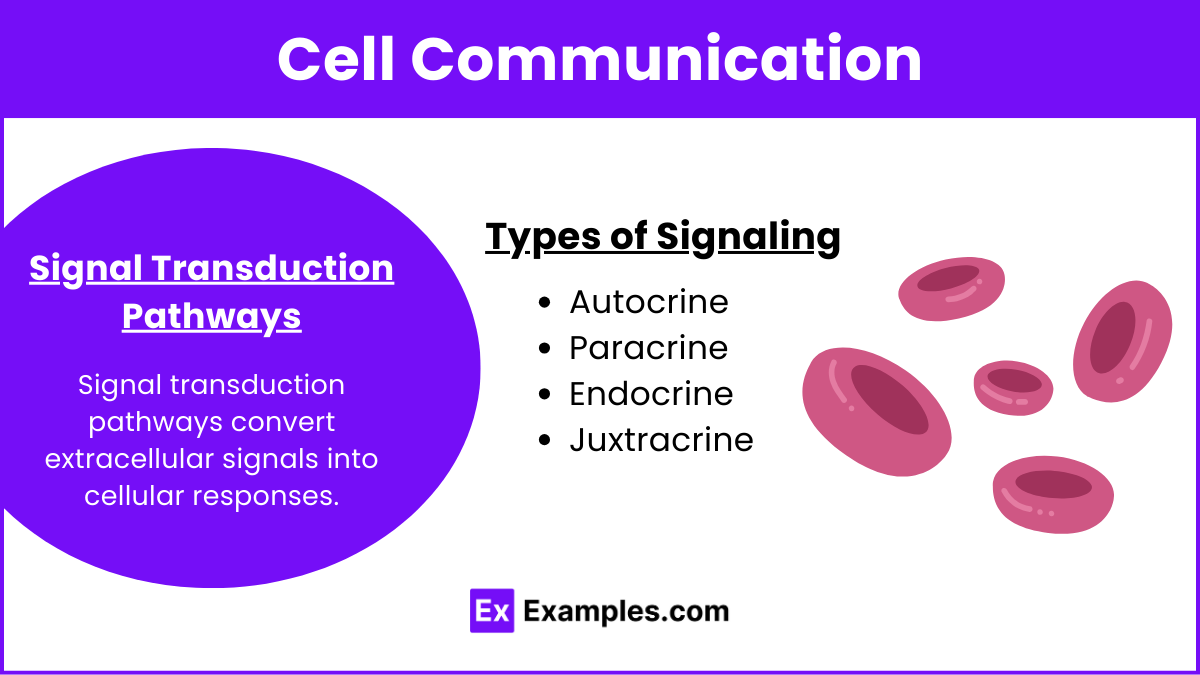
Signal Transduction Pathways
Reception: A signal molecule (ligand) binds to a receptor on the cell membrane.
Transduction: The signal is converted into a form that can bring about a specific cellular response.
Response: The cell takes action based on the signal, such as activating genes or proteins.
Types of Signaling
Autocrine: Cells respond to signals they produce themselves.
Paracrine: Cells respond to signals from nearby cells.
Endocrine: Signals (hormones) travel through the bloodstream to distant cells.
Juxtracrine: Direct contact between cells through gap junctions or cell surface molecules.
Cell-Environment Interactions
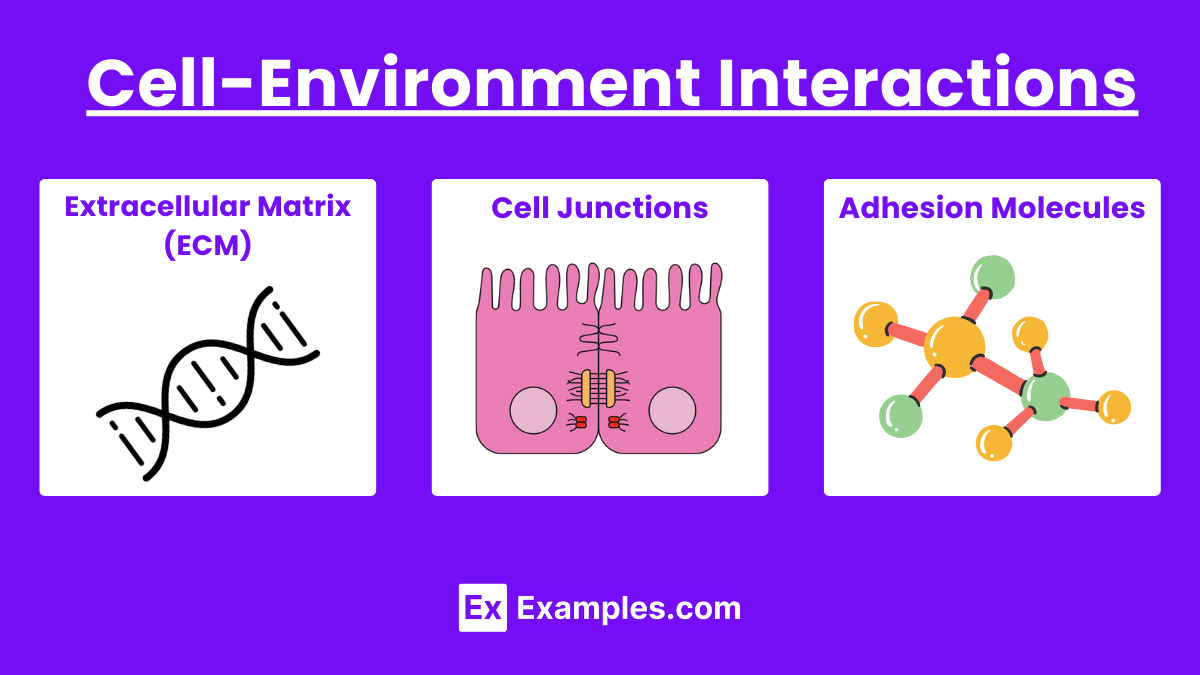
Extracellular Matrix (ECM)
Structure: Network of proteins (collagen, elastin) and polysaccharides.
Function: Provides structural support, segregates tissues, and facilitates cell signaling.
Cell Junctions
Tight Junctions: Create a waterproof seal between cells.
Desmosomes: Anchor cells together.
Gap Junctions: Allow direct communication between cells through channels.
Adhesion Molecules
Cadherins: Calcium-dependent adhesion molecules important for cell-cell adhesion.
Integrins: Transmembrane receptors that mediate attachment between a cell and its surroundings (ECM).
Cellular Response to Environmental Stress

Osmotic Stress
Osmoregulation: Cells maintain water balance through mechanisms like ion channels and transporters.
Temperature Stress
Heat Shock Proteins: Assist in protein folding and protection under stress conditions.
pH Changes
Buffer Systems: Maintain intracellular pH stability

